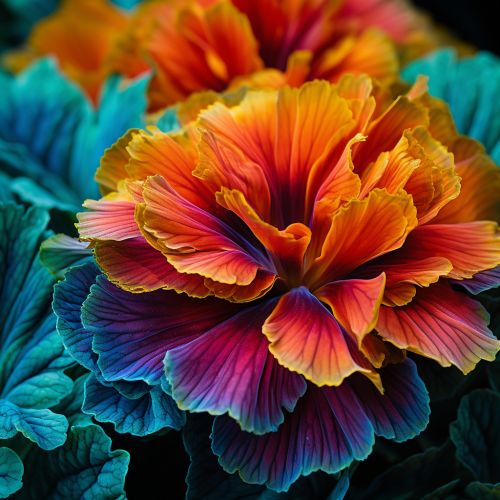Cultivar
Definition and Overview
A cultivar is a plant variety that has been produced in cultivation by selective breeding. Cultivars are usually designated in the style: Genus species 'Cultivar Name'. Selective breeding involves selecting for specific characteristics in plants and breeding them over generations. This process allows for the development of new and unique plant varieties that would not normally occur in nature.


History
The concept of cultivars dates back to the earliest days of human civilization. Early farmers would select the best plants from their crops and save their seeds for planting the following season. This early form of selective breeding led to the development of the first primitive cultivars. The term 'cultivar' itself, however, was not coined until the 20th century. It is a portmanteau of the words 'cultivated' and 'variety', and was first used in 1923 by Liberty Hyde Bailey in his book, 'The Cultivated Evergreens'.
Development and Propagation
The development of a new cultivar involves a long and complex process of plant breeding. This process can take many years and involves the selection and crossing of plants with desirable traits. Once a new cultivar has been developed, it can be propagated through various methods. These methods can include sexual reproduction through seeds, or asexual reproduction through methods such as cuttings, grafting, and tissue culture.
Classification
Cultivars are classified according to the International Code of Nomenclature for Cultivated Plants (ICNCP). This code provides a standardized system for naming and classifying cultivars. Under the ICNCP, a cultivar is defined as a plant grouping that can be clearly distinguished by any morphological, physiological, or other characteristics, and that when reproduced, retains its distinguishing characteristics.
Importance in Agriculture and Horticulture
Cultivars play a crucial role in both agriculture and horticulture. In agriculture, cultivars of crops such as wheat, rice, and corn have been developed to increase yield, improve disease resistance, and adapt to different climates and growing conditions. In horticulture, cultivars are often developed for their ornamental qualities, such as flower color, plant form, and leaf texture.
Challenges and Controversies
Despite their importance, the development and use of cultivars are not without challenges and controversies. Issues such as genetic diversity, patenting and ownership rights, and the impact of genetically modified organisms (GMOs) are all relevant to the discussion of cultivars.
